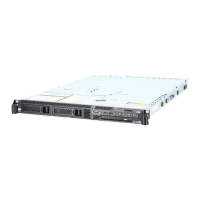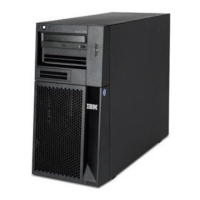v Display Load-Source Failure
Yes No
↓ Go to step 6 of this procedure.
4. On some of the displays that are listed in step 3 of this procedure, you must
press F11 to display reference codes.
Are all of the reference codes 0000?
No Yes
↓ Go to “LIC-PIP 11” on page 350 and use cause code 0002.
This ends the procedure.
5. Go to step 7 of this procedure and use the reference code that is not 0000.
6. Look at the product activity log (see “Product Activity Log” in the iSeries
Service Functions information).
Is an SRC logged as a result of this IPL?
Yes No
↓ You cannot continue isolating the problem. Use the original SRC and
exchange the failing items, starting with the highest probable cause of
failure (see the failing item list for this reference code in “Chapter 2.
Unit Reference Codes” on page 59). If the failing item list contains FI
codes, see “Failing Items” on page 479 to help determine part numbers
and location in the system.
This ends the procedure.
7. Is the SRC the same one that sent you to this procedure?
Yes No
↓ Record the SRC on the Problem Summary Form (see “Appendix A.
Problem Summary Form” on page 951). Then go to “Chapter 2. Unit
Reference Codes” on page 59 to correct the problem.
This ends the procedure.
8. Perform the following:
a. Power off the system or the expansion tower (see “Powering On and
Powering Off the System and Logical Partitions” on page 922).
b. Find the I/O card identified in the failing item list.
c. Remove the I/O card and install a new I/O card (see “Chapter 4. Removal
and Installation Procedures” on page 617). This item has the highest
probability of being the failing item.
d. Power on the system or the expansion tower.
Does an SRC appear on the control panel?
No Yes
↓ Go to step 16 of this procedure.
9. Does one of the following displays appear on the console?
v Disk Configuration Error Report
v Disk Configuration Warning Report
v Display Unknown Mirrored Load-Source Status
v Display Load-Source Failure
Yes No
SDIOP PIPs
Chapter 3. Problem Isolation Procedures (PIPs), Failing Items, and Symbolic FRU Isolation 405

